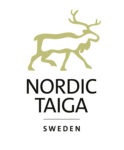Rewilding Sweden
Europe's untamed land of the Nordic Taiga
Criss-crossed by countless waterways, the Nordic Taiga landscape is defined as much by its rivers and lakes as it is by its sprawling forests. While many of these rivers have been dammed, others provide anglers with some of the best fishing in northern Europe. Yet even on undammed waterways, a variety of anthropogenic factors have negatively impacted fish migration. Rivers such as the 210 kilometre-long Råne and 400 kilometre-long Pite today witness annual runs of salmon and sea trout that are far less than their natural carrying capacity. Working in collaboration with fishing associations on both the Råne and Pite, Rewilding Sweden is now working hard to boost fish migration, through activities such as spawning ground restoration and the removal of artificial obstacles. Sonar-based fish counters are used on both rivers to measure results. In Sweden’s first ever fishing management system, the Råne River Fishing Association – a collection of 275 land owners that rents fishing rights – now employs a strict catch-and-release policy, and has imposed a complete ban on fishing in the river at certain times of year. A similar approach has been taken on the Pite, which is renowned for its salmon, sea trout and grayling. Together with river restoration, Nordic Taiga is exploring new nature-based business opportunities, providing support to enterprises involved in fishing and otter watching on the lower Råne.
Furthermore, Rewilding Europe is working with Rewilding Sweden and local partners to support guided reindeer migration, raising awareness of these threats and supporting Sami communities in their fight for traditional grazing rights. The aim is the full protection of all remaining old-growth forests, combined with the adoption of reindeer-adapted forestry and the elimination of mining threats to key reindeer wintering areas. By collaborating with Sami communities to develop wildlife watching businesses and guided reindeer tourism, the Rewilding Lapland team and partners are working to grow a local nature-based economy and reduce human-wildlife conflict. Raising Sami income from wildlife watching will hopefully contribute to greater acceptance and protection of local wild nature, including an increased tolerance of the presence of large carnivores.
Cooperation with the LIFE project (Restoration of Boreal Nordic Rivers, REBorn) and the County of Norrbotten on various rewilding activities.
Letter of intent signed with Sveaskog to cooperate on the development of a wildlife lodge near Trollforsen, including the lease of fishing rights.
Cooperation started with local businesses, through support of the Rewilding Europe Capital to identify possible pipeline REC loans to local entrepreneurs.
Swedish Lapland experiences offered through the European Safari Company.

Criss-crossed by countless waterways, the Nordic Taiga landscape is defined as much by its rivers and lakes as it is by its sprawling forests. While many of these rivers have been dammed, others provide anglers with some of the best fishing in northern Europe. Yet even on undammed waterways, a variety of anthropogenic factors have negatively impacted fish migration. Rivers such as the 210 kilometre-long Råne and 400 kilometre-long Pite today witness annual runs of salmon and sea trout that are far less than their natural carrying capacity. Working in collaboration with fishing associations on both the Råne and Pite, Rewilding Sweden is now working hard to boost fish migration, through activities such as spawning ground restoration and the removal of artificial obstacles. Sonar-based fish counters are used on both rivers to measure results. In Sweden’s first ever fishing management system, the Råne River Fishing Association – a collection of 275 land owners that rents fishing rights – now employs a strict catch-and-release policy, and has imposed a complete ban on fishing in the river at certain times of year. A similar approach has been taken on the Pite, which is renowned for its salmon, sea trout and grayling. Together with river restoration, Nordic Taiga is exploring new nature-based business opportunities, providing support to enterprises involved in fishing and otter watching on the lower Råne.
Furthermore, Rewilding Europe is working with Rewilding Sweden and local partners to support guided reindeer migration, raising awareness of these threats and supporting Sami communities in their fight for traditional grazing rights. The aim is the full protection of all remaining old-growth forests, combined with the adoption of reindeer-adapted forestry and the elimination of mining threats to key reindeer wintering areas. By collaborating with Sami communities to develop wildlife watching businesses and guided reindeer tourism, the Rewilding Lapland team and partners are working to grow a local nature-based economy and reduce human-wildlife conflict. Raising Sami income from wildlife watching will hopefully contribute to greater acceptance and protection of local wild nature, including an increased tolerance of the presence of large carnivores.

Cooperation with the LIFE project (Restoration of Boreal Nordic Rivers, REBorn) and the County of Norrbotten on various rewilding activities.
Letter of intent signed with Sveaskog to cooperate on the development of a wildlife lodge near Trollforsen, including the lease of fishing rights.
Cooperation started with local businesses, through support of the Rewilding Europe Capital to identify possible pipeline REC loans to local entrepreneurs.
Swedish Lapland experiences offered through the European Safari Company.


